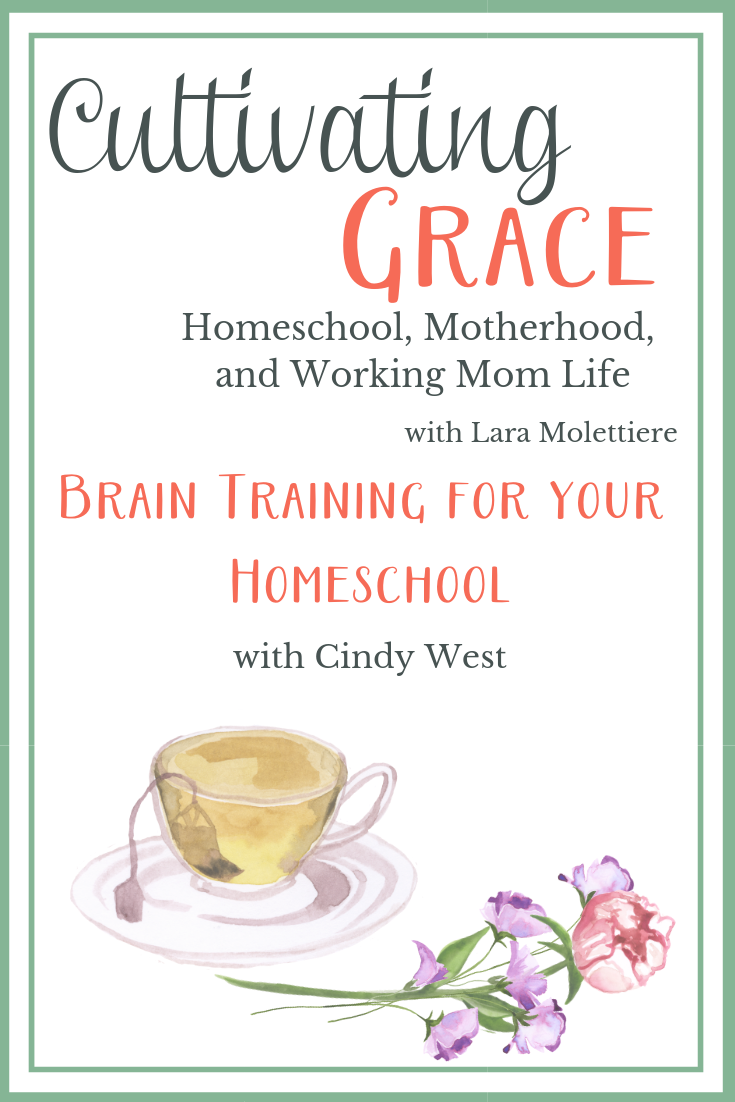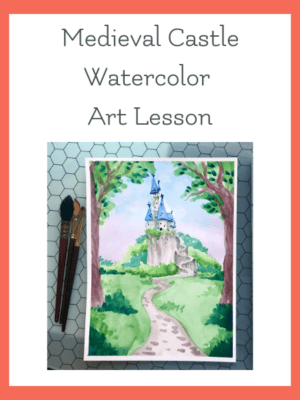
Today’s episode of Cultivating Grace is sponsored by:
The Homeschool Garden Charlotte Mason Inspired Morning Time Plans for Busy Families
Listen here:
How to Implement Brain Training at Home
Hey there, friends. This is Cindy West of OurJourneyWestward.com. I am here to talk to you just a little bit about brain training and why we have made it such an integral part of our day for many years now in our homeschool.
Brain training is part of our morning time almost every single morning of every single homeschool day. What we do is start our day off with these game-like activities that help wake our minds up and work on executive functioning skills like attention and memory and processing speeds, comprehension and even logical understanding.
What we do is each morning we have a game or two that we play. They’re very fun, so nobody is too frustrated that we are doing them. That’s the way we start our day. We are starting our day off on a really good fun foot and building connections between right and left sides of brains that help all of our kids to grow in those executive functioning skills.
It doesn’t really matter whether you have a child with ADHD, autism, giftedness. Really any person, even if they’re kind of what you would consider a typical child, any person can really benefit from practicing executive functioning skills.
Resources for Brain Training in Your Homeschool
Spot It! Story Cubes
Story Cubes Rush Hour Jr.
Rush Hour Jr. Simon
Simon Blink
Blink Tetris Wooden Puzzle
Tetris Wooden Puzzle Scrabble Slam
Scrabble Slam Gravity Maze
Gravity Maze Linguistic Development through Poetry Memorization
Linguistic Development through Poetry Memorization
For instance, when you think about attention, you think about I need to be able to look at something or I need to be able to hear something, and I need to comprehend it, and I need to remember what I’ve seen. I need to process what I’ve seen or heard. I need to be able to do all of that while sometimes things might be going on around me that could be distracting. That’s what we’re talking about when we say executive functioning skills. These games do that for us.
I will just give you a couple of examples of what we do on a daily basis. Then if you are interested in learning more, diving a little bit deeper into this idea, learning some more of the games that we play, even where I got my training and how to do this in my homeschool, you are welcome to visit my blog, OurJourneyWestward.com/brain-training. You will find everything you need.
Okay, so a typical game that we might play that I bet you know about is called Spot It! Have you seen the little Spot It! game? It’s circular. It’s got all these little pictures on it. Each card will have one picture that matches a picture on another card. All of the players are racing to see who can identify the picture on the card in the middle that matches the card they currently have in their hand.
You are training their visual attention. You are training their working memory. Working memory means they’re having to remember things while they’re also thinking about other things. You are training their processing speed to be faster, especially their visual processing speed, and you are training them to logically think about, “How will I be the first to identify my picture?” That simple little game is a powerhouse in training executive functioning skills.
Why would we want to do that? Why would a little game like Spot It! that really is appropriate for even a three-year-old, why would I play something like that in my homeschool on a regular basis? With older kids even. Well, because of what I just mentioned. A quick little game that takes us maybe two to three minutes has gotten right and left sides of the brain firing back and forth with each other. It is getting children woken up practicing all those executive functioning skills. Not only are they building those executive functioning skills, they are ready to roll with those on a daily basis.
Whether you’re starting with children who are struggling and you spend a lot of time with brain training to build up those skills, or you’re starting with a child who isn’t really struggling but could just use a brain wake up in the morning, these are perfect to use.
Another game that we love is the game Blink. It’s another card game. It has several different shapes with different characteristics on them. Well you can play the game a couple of different ways, which you can find on my blog. But basically you have to use, again, visual. This one’s a visual processing. You have to use your visual processing and working memory to be the first person to match cards based on various characteristics. Again, you have logical understanding. You have comprehension. You have processing speed. You have working memory, and you have visual attention all going on at once.
You know another word for attention is focus. If you have a child who is easily distracted, unable to focus very well, unable to follow a series of directions very well, then you will want to look into brain training games for your homeschool.
I could go on and on about this all day, but I know our time here is short, so I will wrap this up and just encourage you that homeschooling can be fun. The more fun you make it, the more your children are on board with things. Brain training games are a great way to bring some fun and some real learning into your homeschool and start your day off on a great foot.
About Cindy

Cindy West is an eclectic Charlotte Mason homeschooler who found brain training as she searched for ways to help one of her children with attention and focus issues. After seeing magnificent results from a dedicated 8-week program, she has continued to include daily brain training activities into her homeschool day for the benefit of the entire family.
Find Cindy online:
Facebook, Instagram, YouTube, Pinterest, Blog








Leave a Reply